Veiled Sculptures in Art History: Beauty Carved in Stone
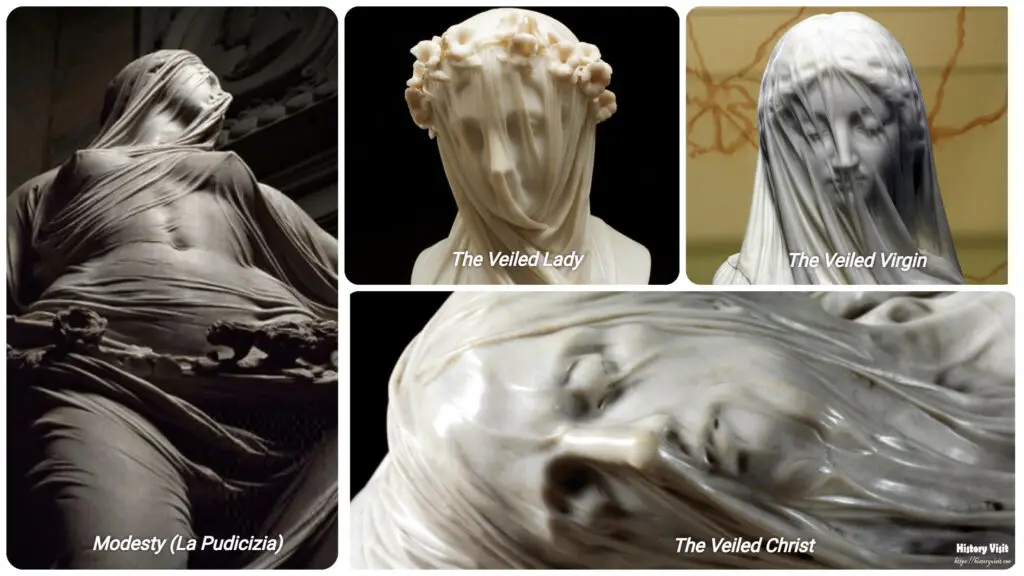
Introduction
Veiled sculptures have fascinated art lovers for centuries. These works mix realism and mystery. The veiled form turns solid stone into soft illusion. This blend of skill and story captures hearts.
Each veiled sculpture holds emotion. The veil shows modesty, divinity, or mourning. Artists used marble to tell quiet stories. They carved what seemed impossible.
This article explores four veiled masterpieces. Each work shows genius and grace. These sculptures prove marble can whisper, glow, and breathe.
The Veiled Virgin by Giovanni Strazza
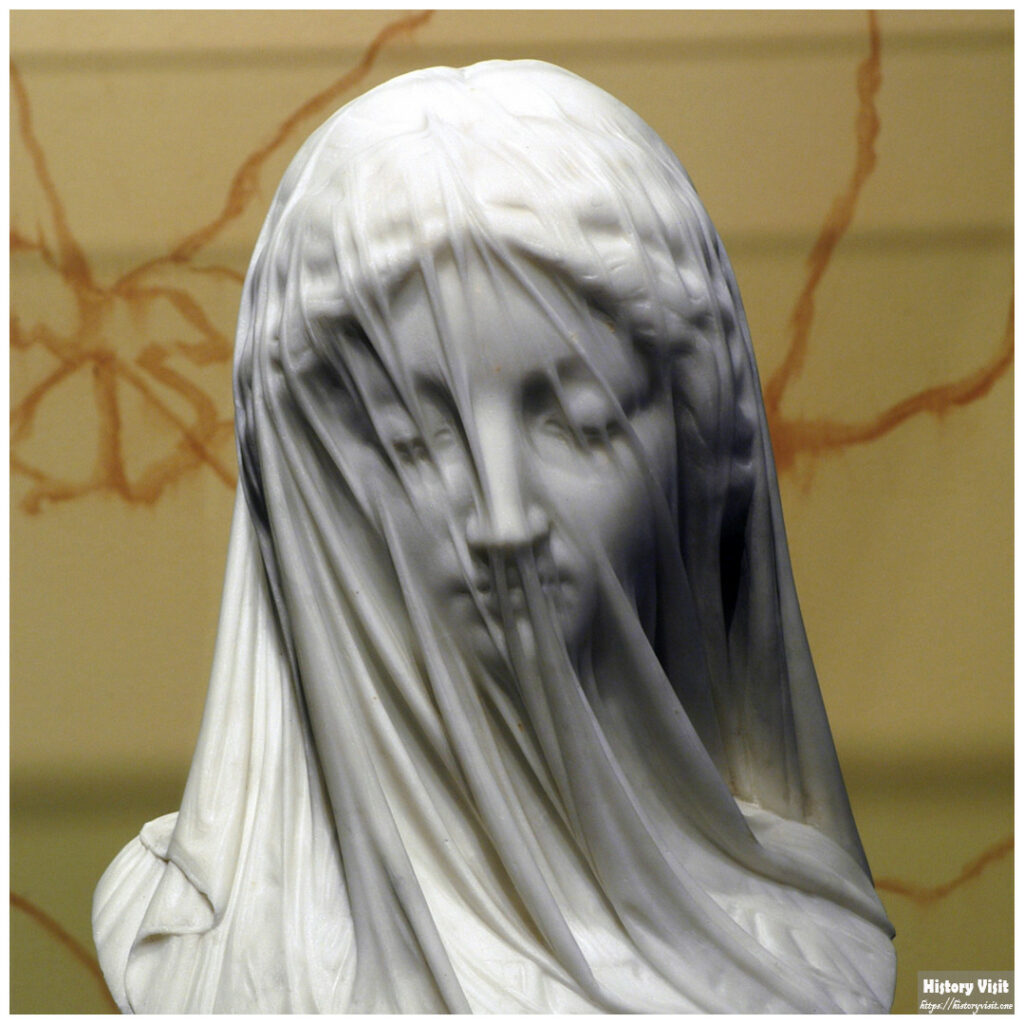
The Veiled Virgin is one of the most loved veiled sculptures. Giovanni Strazza made it in the 1850s. It shows the Virgin Mary with a veil. The veil seems light as air.
Strazza was an Italian sculptor. He worked mostly in Milan. His skill with marble was known across Europe. This sculpture became his most famous work.
The Virgin’s face is calm and tender. Her eyes are shut in peace. The veil clings softly to her features. Every fold looks real. But it is all stone.
This piece captures divine purity. The veil is not just cloth. It is a symbol of holy grace. People often feel peace when viewing it. It brings both awe and calm.
The Veiled Christ by Giuseppe Sanmartino
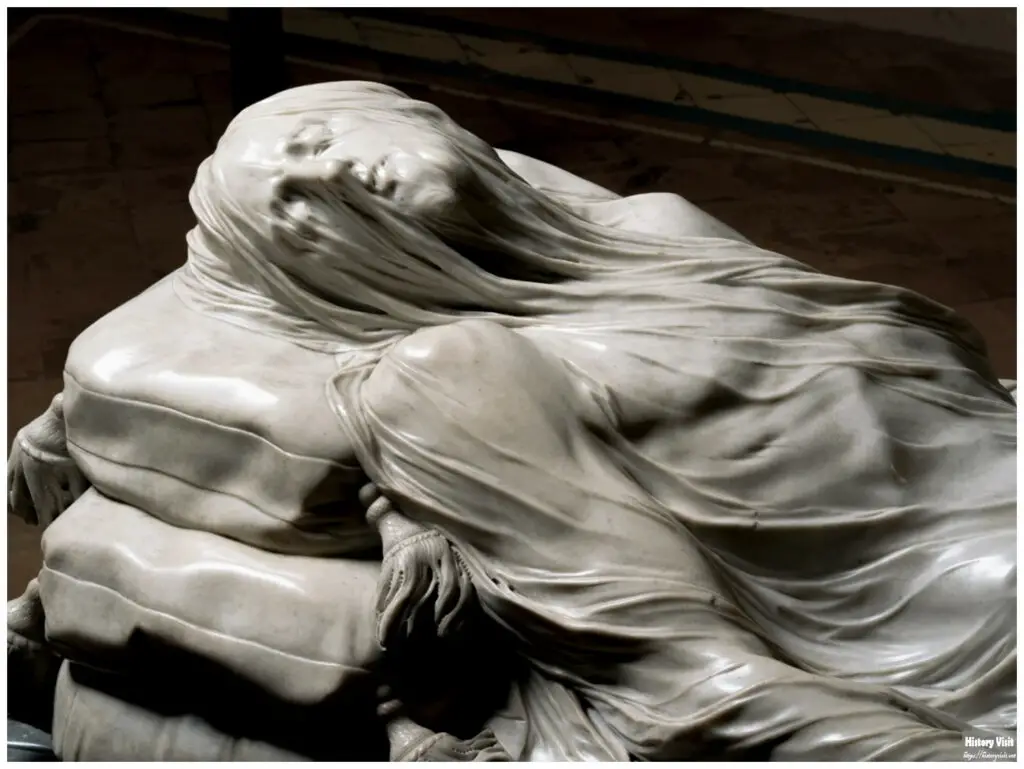
The Veiled Christ is perhaps the most emotional veiled sculpture. It was made in 1753. Giuseppe Sanmartino was the artist. The piece lies in the Sansevero Chapel in Naples.
It shows Christ after crucifixion. He lies with a veil over his body. The veil is thin and delicate. Yet, the marks of pain still show beneath it.
Sanmartino used marble to show every detail. You see the ribs, wounds, and relaxed hands. The veil falls like silk. Viewers often feel deep emotion.
The sculpture was once thought to be made with real cloth. Some believed it was transformed into stone. That myth shows how real it looks. It is a work of both skill and feeling.
The Veiled Lady by Raffaelle Monti
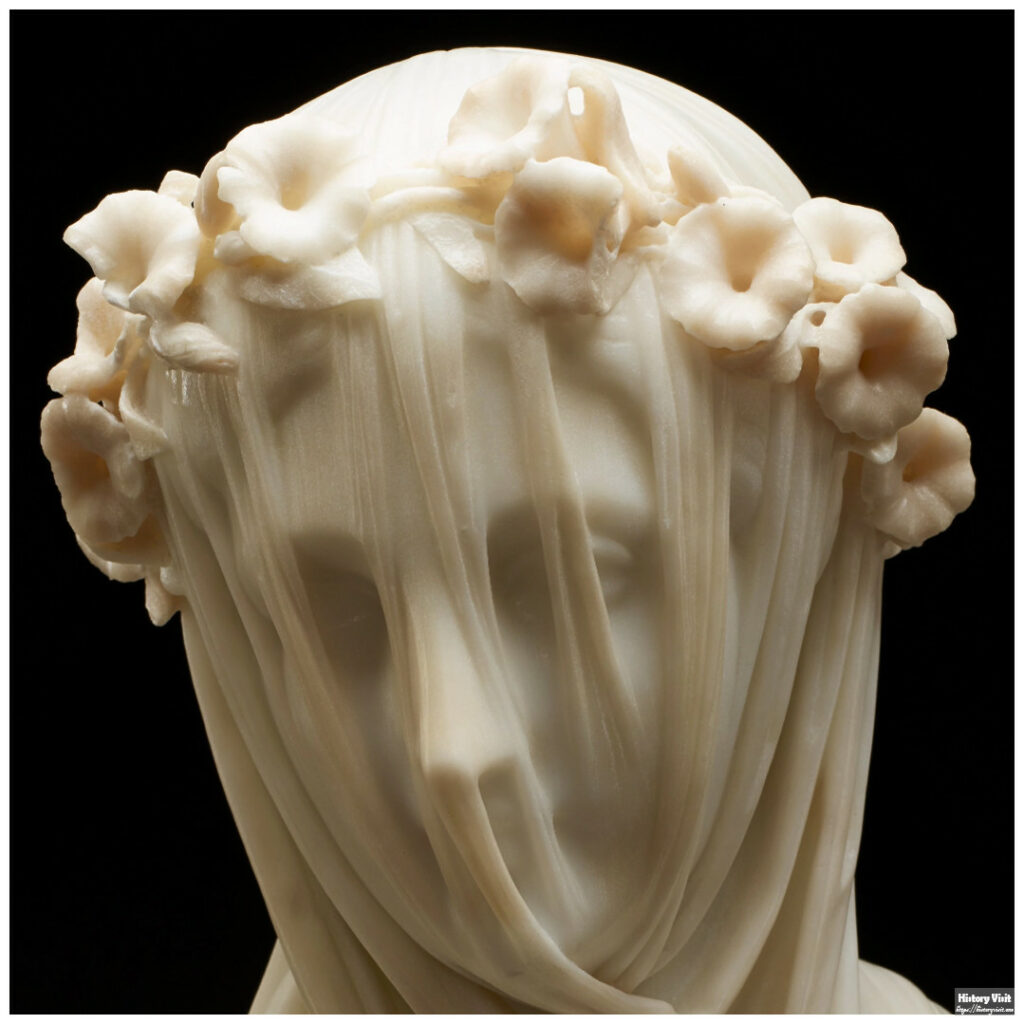
The Veiled Lady is another masterpiece of marble illusion. Raffaelle Monti created it in the mid-19th century. He was known for veiled figures.
Monti came from Milan. He studied under his sculptor father. His art blends beauty with technique. The Veiled Lady shows a woman in quiet thought.
The veil flows over her face. Her features are soft but clear. You see both skin and cloth. This dual view makes the sculpture unique.
The piece reflects mystery and grace. It captures silence in stone. Monti became famous for this style. The Veiled Lady remains a symbol of delicate power.
Modesty (La Pudicizia) by Antonio Corradini
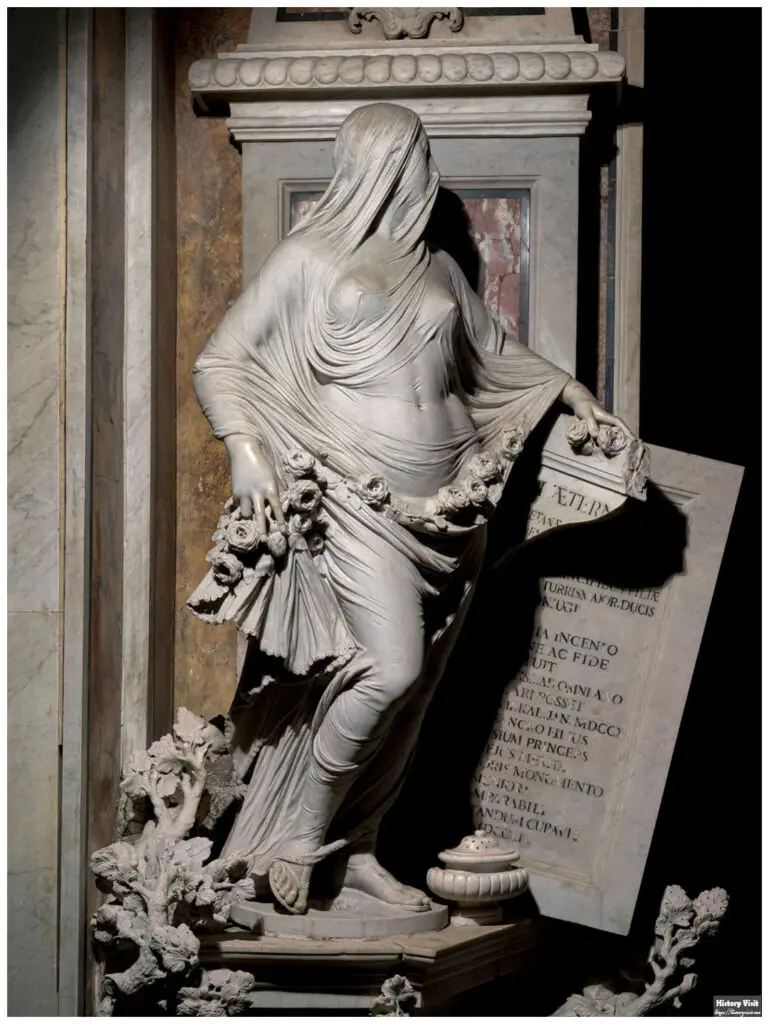
Modesty, also called La Pudicizia, is a work of devotion. Antonio Corradini made it in 1752. It stands in the Sansevero Chapel in Naples.
The sculpture honors Cecilia Gaetani, the mother of Prince Raimondo. She died young. Corradini carved her as a veiled figure. She stands with one hand on a tombstone.
The veil covers her head and body. Her form is clear beneath it. The marble veil looks light and soft. Every fold falls naturally.
The sculpture shows sadness and purity. It reflects deep respect. The veil shows both concealment and clarity. Corradini mastered the illusion of fabric. Modesty remains one of his finest works.
The Illusion of the Veil in Marble
Carving a veil in stone is hard. The veil must look thin but is thick. It must show what’s beneath without hiding it.
Artists used light and shadow. They shaped marble with care. Each line was planned. Every fold took patience.
These veiled sculptures show what marble can do. It can become cloth. It can show skin. It can express silence.
This illusion is part of the magic. It makes people stop and wonder. How can stone look so soft?
Themes of Modesty and Mystery
Veiled sculptures often suggest modesty. The veil hides yet reveals. It offers grace and silence.
In art, veils can mean more. They show spiritual truth or deep sorrow. Each veil has meaning.
The Veiled Virgin shows purity. The Veiled Christ shows pain. The Veiled Lady shows beauty. Modesty shows honor and grief.
These themes connect people to the sculpture. They make each piece feel close. They turn marble into feeling.
Emotional Response from Viewers
People react strongly to veiled sculptures. They feel peace or sadness. Some feel mystery. Some feel calm.
These reactions show the sculptures’ power. They touch hearts. They stay in memory.
Viewers often speak softly around them. The art creates quiet. It commands respect.
This quiet force is rare. It shows how strong gentle beauty can be.
Impact on Sculpture and Artists
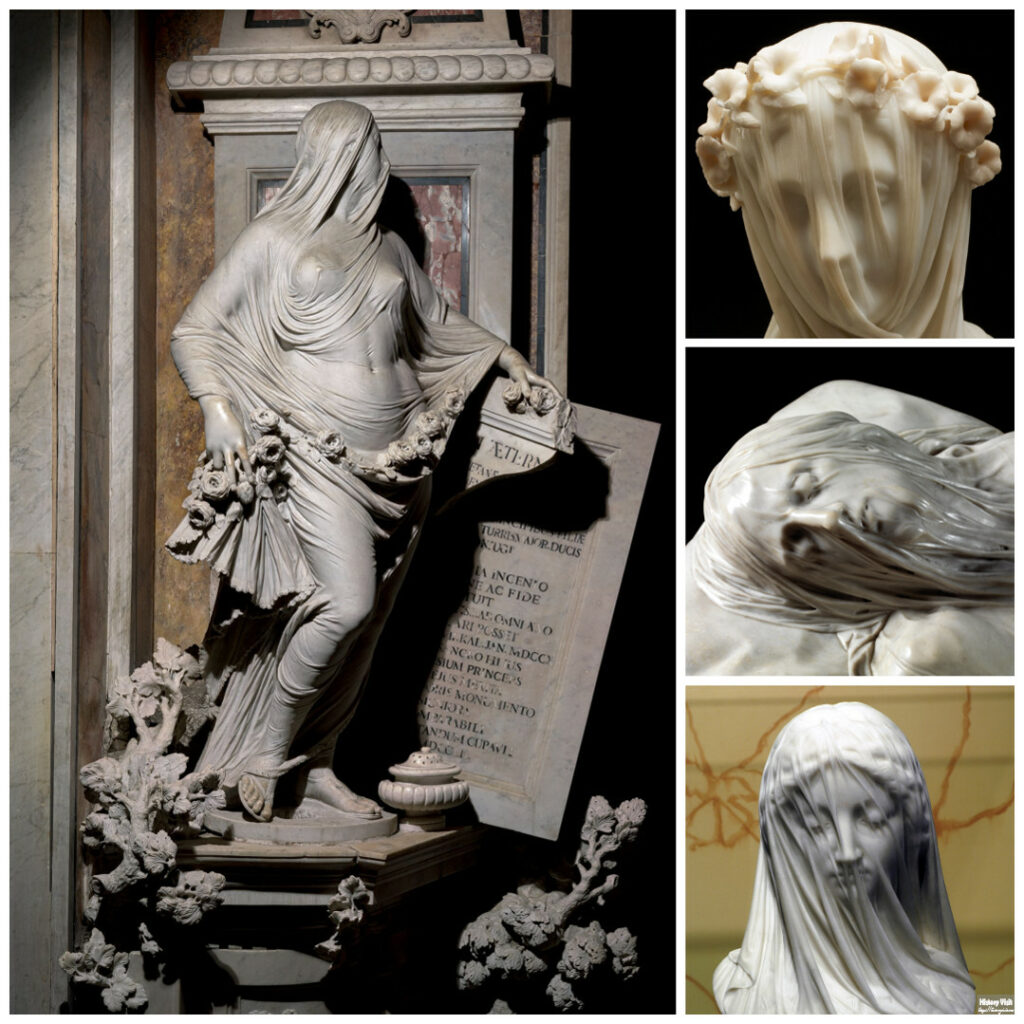
These works inspired other artists. The veil became a challenge. It became a sign of skill.
Many tried to copy the style. Few matched the feeling. The originals remain special.
Veiled sculptures are taught in schools. They are studied in museums. They are shared in books.
Their impact is lasting. Their influence is wide.
Preservation and Display
These sculptures are protected. Museums keep them safe. They use soft light and clean air.
Visitors are guided carefully. Photos are limited. Touching is not allowed.
Preservation keeps the art alive. It respects the work and the story.
Each sculpture is a treasure. Each needs care.
Modern Interest and Interpretation
Today, people still love veiled sculptures. They appear in films, books, and digital art. Their look feels timeless.
Art lovers post images online. Students write papers. Artists try new veiled styles.
The old meets new. The marble veil still inspires.
Its mystery remains. Its beauty endures.
Conclusion
Veiled sculptures are quiet wonders. They show strength in softness. They show skill in silence.
These four masterpieces reveal deep feeling. Each tells a different story. But all use the veil as voice.
From Strazza to Corradini, marble became cloth. The veiled form remains unmatched. It speaks across time with grace.


